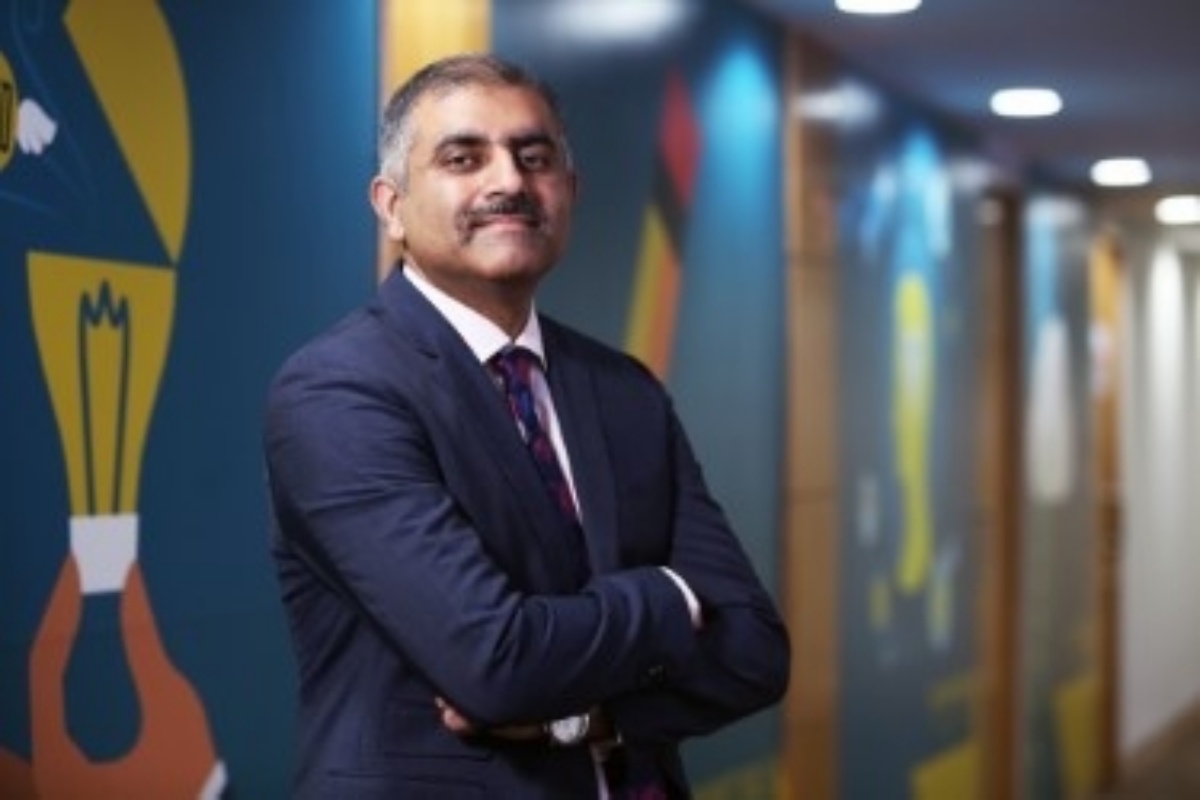The VUCA — Volatile, Uncertain, Complex, Ambiguous — world we live in has become an all-pervasive mega-trend, dramatically changing the lives of individuals, business models of enterprises, and the Indian economy.
It requires unlearning the old rules and learning the new or losing unrecoverable ground, says Nitin Seth, an accomplished industry leader with a unique combination of experiences as a global manager, entrepreneur and management consultant, who has distilled his experiences into a framework of seven building blocks necessary for successful digital transformation.
Advertisement
Most enterprises have embarked on some variation of digital transformation but their impact often falls short of expectations by 70 percent as “the core issue is that enterprises have not recognized how much business fundamentals have changed in the Digital Age and continue to take their existing business models, infrastructure, and approaches and apply it to digital age problems and opportunities”, Seth writes in the seminal book, “Winning in the Digital Age” (Penguin Enterprise).
“It is clear if you apply old world formulas to new world situations, your outcomes can only be sub-optimal,” maintains Seth, who held top management positions with McKinsey (two spells), Fidelity and FlipKart before founding Incedo Inc., a high-growth technology services firm focused on Digital Transformation and Analytics.
“Incremental thinking no longer works, If you don’t think differently, someone else will cannibalize your business or your skillset. Therefore, we all need a new mindset and set of principles to succeed in this digitally disrupted world or risk losing ground,” Seth adds.
This means coping with an “unprecedented velocity of change” that includes technology disruption, changing expectations of customers who are digitally savvy and demand high-quality experiences and solutions, an explosion of data from multiple touchpoints, geopolitical uncertainty, and shortening business and product cycles.
Thus, what is required are drastic changes in the educational system to prepare the generation entering the job market and reskilling those already in the workforce.
“For learning and development overall, I believe there are four key shifts that need to occur as a result of the power of Digital Technology.
“First, a shift from one-size-fits-all learning, to a high degree of personalization.
“Second, there has to be a shift from standard predetermined push-based learning sessions, to bite-sized, self-directed learning lessons.
“Third, learning needs to move from a classroom style to be multi-dimensional and channel-agnostic, which involves innovative approaches so that digital natives are engaged.
“Fourth, a move from hard skills focus to a soft skills focus. Shifting learning and development in these four ways will ensure more individuals are prepared for 21st-century jobs which will require lifetime learning skills,” Seth explained.
What then, are his seven mantras?
* New Rules of Business at three different levels: the general level of the VUCA world, the digital transformation level and the level of specific technical elements of digital.
* Industry Maturity Curves: The protracted work-from-home situation resulting from the Covid-19 pandemic has given a significant boost to digital penetration in every industry we are operating in.
* Digital Technologies: These are not independent but interconnected; enterprises realize transformative value when these digital technological building blocks are connected end-to-end. Data is the fulcrum for digital. It can trigger a virtuous cycle; equally, data challenges can quickly escalate into a vicious cycle.
* Global Delivery Model: Every enterprise in the digital age has to be a global enterprise. Enterprises can develop this global footprint either by partnering with service companies or by establishing their own dedicated technology operational centers. A Global Delivery Centre covers both these entities.
* Organisational Transformation: This is probably the most important enabler of digital transformation. In addition to culture, there are at least seven organizational capabilities that are key to sustained success in the digital age � proprietary knowledge building and sharing, innovation, agility, learning, diversity, change management, and enabling functions like HR and finance.
* Entrepreneurial Leadership: In an era of unprecedented uncertainty and change, traditional tools of management like structure, strategy, planning and policies do not just lose effectiveness, but can also become a roadblock. Instead, you need vision, inspiration, intuition, collaboration and ability to constantly adapt. �Managers to Leaders’ has become an absolute imperative in the digital age.
* Next Generation Talent: Prior experience and successful track records are less relevant than before because you need to unlearn the old and learn the new rules of the game. Prominent among the requirements are continuous learning, creativity and innovation, tech DNA, agility, management of duality, and spiritual and ethical balance.
“My advice for young professionals is that digital is a great equalizer, it presents discontinuous opportunities for them. There are vast opportunities for young professionals and this should liberate them to explore, find and live the unique purpose of their own lives. They should consider being an entrepreneur since digital disruption is creating a host of new business opportunities and risks are relatively low with high returns. Finally, they need to build strong problem-solving and decision-making skills.
“The VUCA world we are living in is characterized by high volatility and complexity. So, problem-solving and effective decision-making skills have become more important than ever before. These are foundational skills that every young professional should build in the digital age, irrespective of his or her choice of career,” Seth explained.
Finally, 21st-century leadership more than ever is about managing duality.
“The Digital Age poses many contradictions that leaders need to respond to – vision/strategy versus execution, growth versus profitability, short-term versus long-term, customer versus employees, data versus intuition, man versus machine, and many more. It is not enough to find the trade-offs on these complementary values, but leaders need to find win-win solutions. This increased need to manage duality is an important expectation of leaders in the Digital Age,” he maintained.
What next? What’s his next project?
“I am now writing my next book on Spirituality and Leadership that is a necessity to win in the Digital Age. With so much chaos and disconnectedness in this Digital Age, being centered and connected with the inner-self is crucial to realizing purpose. Finding the balance between Spirituality and Materialism is an often ignored key to succeed and must be found by each one of us,” Seth concluded.
















